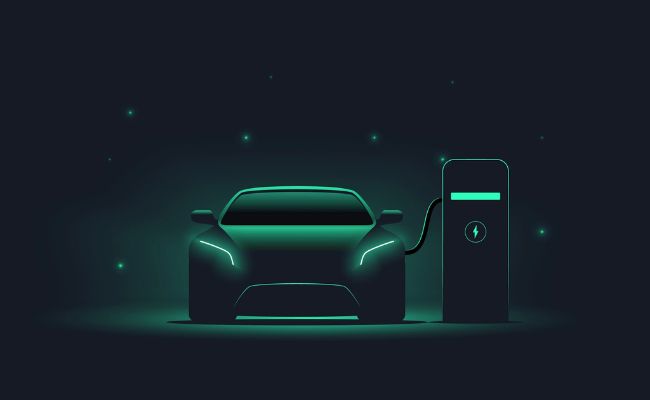Electric vehicles (EVs) differ from combustion engine vehicles, particularly in terms of torque. The torque of an electric vehicle is more linear, providing instant maximum torque, whereas in a combustion engine, maximum torque is reached gradually after the vehicle achieves a certain speed and engages in regenerative braking.
In India, conventional scooters, three-wheelers, four-wheelers, tractors, and commercial vehicles are rapidly being replaced by electric vehicles. On average, more than 3 million vehicles in India are now operating on electricity. With the introduction of electric vehicles, the conditions of insurance policies, the style and constraints of surveys, claim admissibility, salvage value, and the nature of reparability have all undergone changes.
Many imported components lack child parts in India, forcing major replacements instead of repairs. The reparability and cost of repairing EVs are very high. Based on our market survey, it is observed that the repair cost of electric vehicles in India is 30 to 35% higher than that of petrol and diesel vehicles.
In India, the availability of technical parts for electric vehicles is very poor. Even when available, the cost is about 50% higher than similar parts for diesel and petrol vehicles. These parts include:
- High voltage battery
- Battery control unit
- Battery cabinet
- Battery box
- Charger system
- Electrical parts
In India, batteries are not repairable due to the high cost of repairs, making the battery the highest liability in insurance claims. Another significant cost is the driver’s airbag system. In India, the frequency of airbag system replacements is 10% higher compared to diesel and petrol vehicles due to the higher collision risk.
Fiber and plastic parts, such as thin foil strips used in bumpers and other components, are not repairable in the event of an accident, contributing to higher loss assessment costs.
Electric vehicles have a higher collision risk, as mentioned earlier. The use of plastic and other fragile materials increases the chances of damage in the event of an accident.
TORQUE: Diesel and petrol vehicles operate with diesel and petrol engines, respectively, while electric vehicles operate with electric motors. The torque from an electric motor is available instantly, providing immediate acceleration and maximum capacity. In contrast, a combustion engine must reach a certain speed to deliver maximum torque. The faster control required by drivers can increase the risk of collision. Some vehicles feature a power differential system that controls speed and reduces collision risks.
BRAKING SYSTEM & ACCELERATION: In electric vehicles, the braking system is regenerative, which is crucial when driving. Regenerative braking is a recovery mechanism that slows down a moving vehicle by converting its kinetic energy into a form that can be used immediately or stored for later use. A trained driver is also essential to avoid collision risks.
DRIVING ELECTRIC VEHICLES: Modern electric vehicles are more sophisticated than conventional petrol and diesel vehicles. For drivers, it is challenging to learn how to operate multi-vehicle systems, leading to a higher accident rate in electric vehicles. Many collisions today are attributed to driver error.
MAINTENANCE: Compared to petrol and diesel vehicles, the maintenance cost for parts, greasing, and other factors is lower in electric vehicles due to fewer moving parts. However, electric vehicles are more prone to wear on tires, brakes, and electrical systems.
VEHICLE LIFESPAN: Electric vehicles generally have a shorter lifespan than petrol and diesel vehicles due to excessive wear on tires and other systems.
COST OF CLAIMS: Based on our experience, it is observed that the claim cost for petrol and diesel vehicles is about 30 to 35% higher than that for electric vehicles in India. However, when considering the time required for repairs, the cost for electric vehicles is 20 to 25% higher.
FIRE RISK: The fire risk is very high if electric vehicles are not properly maintained.
BATTERY: The battery in an electric vehicle is a sophisticated component. If it sustains scratches in an accident or otherwise, it is very difficult to consider the battery usable, as it is always dangerous and highly prone to fire and explosion, making it unsafe. Therefore, the battery is considered a high-risk component.
SALVAGE VALUE: The recovery of salvage value is lower compared to petrol and diesel vehicles since most components are non-metallic. Due to advanced technology, actual metal recovery is lower than in other vehicles.
SUMMARY: Electric vehicles are being widely discussed in India for their potential to reduce environmental pollution in cities like Delhi, Mumbai, and other towns. They have contributed to a reduction in pollution levels.
In a country like India, where the middle class dominates, high vehicle costs lead to higher insurance premiums and claim values. This presents a challenge for both the insured and insurers to design policies that suit the electric vehicle market, including two-wheelers, three-wheelers, and four-wheelers, in a sustainable manner.
An annual study on electric vehicle insurance claim data is required to optimize the premiums for various types of electric vehicles.


